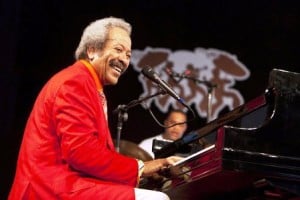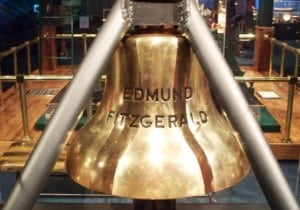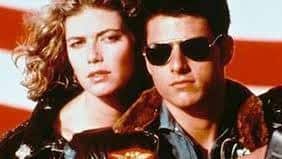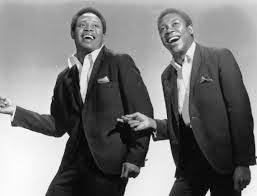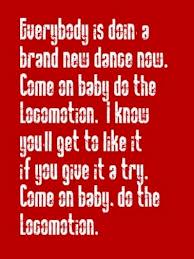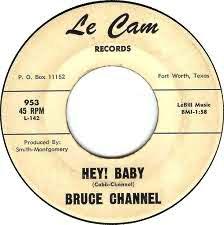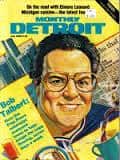A Friday Song Double Shot
I’m “..not too proud to shout it, tell the world about it..”, “This Old Heart of Mine” is one of the Motown copyrights I truly love.
Written by Holland-Dozier-Holland, with Sylvia Moy ( co-writer of Uptight, I Was Made To Love Her, It Takes Two and others), there’s just something about that song.
The original version, by The Isley Brothers, had me cranking up Keener while driving down 13 Mile Road. Two and a half decades later, driving around West Michigan, the car radio was just as loud for Rod Stewart’s “This Old Heart”!
But for the life of me, I can’t tell you which is my favorite. Thus a Keener Friday Song “Double Shot”.
Released in the January of 1966, “This Old Heart Of Mine” gave The Isleys their only major hit for Motown, going straight to the Top Ten. Give another listen to a stellar lead vocal by Ronnie Isley, backed by one of the classic tracks of The Funk Brothers (and the DSO strings!)
Some 23 years later, Rod Stewart released his second version (a previous single in ’75 got minor airplay) of “This Old Heart”, and this time he brought in the big gun, Ronnie Isley! The R&R duet, produced by Bernard Edwards of Chic and Trevor Horn (Yes, The Buggles), went Top Ten in the summer of 1989, and proved that Ronnie Isley had lost nothing ‘off his fastball”.
#TBT With Donna Summer
It’s an astounding song, really.
Lyrics, “…someone left a cake out out in the rain…” that are at once allusive and elusive. A song-poetry, really, built in 4 sections, or movements, much like a classical composition. And, it was 7 minutes long in it’s original form.
And yet, Jimmy Webb’s “MacArthur Park”, for all it’s contrarian Top 40 radio characteristics, has twice been a smash.
The original, the debut recording for Irish actor Richard Harris was Top 5 in the summer of ’68. And, again ten years later, for Rock and Roll Hall of Fame member, Donna Summer.
At the height of her success, her 4 minute single was Number One for the week of November 12, 1978, on both the Billboard Hot 100 and Dance charts. And, at the same time, she was #1 on the albums charts, with her album Live and More, featuring the eighteen minute “MacArthur Park Suite“.
Enjoy Throwback Thursday on Keener!
NOLA Music Legend Allen Toussaint Dies At 77
You can hardly feel sadness when person dies doing what they truly loved. And so it is with the news of Allen Toussaint’s death in Spain on Monday.
Mr. Toussaint, a member of the Rock and Roll Hall of Fame, was 77.
His career in music was legendary, and in a city of musical giants, Louis Armstrong, Professor Longhair, Fat Domino, Dave Bartholmew and the Neville Bros., to name a few; Mr. Toussaint career and contributions stand second to none.
We at Keener13.com mourn the passing of Allen Toussaint, and celebrate his life with a Top 5 overview of his music. Rest In Peace, knowing we are forever grateful for the good times you have left for the ages.
In 1975, be it at the roller rink, the dance floor, house party on on the radio, you could not miss the unmistakable sound of Patti Labelle, with a #1 song written by Bob Crewe and Kenny Nolan, and produced by Mr. Toussaint.
Number One in 1961, written and produced my Allen Toussaint, here’s Ernie K-Doe.
Inspired by his childhood memories of nights in Louisiana, Mr. Toussaint’s “Southern Nights” resonated with Glen Campbell, who hit # 1 on three different charts in 1977.
Another smash from The Big Easy, Lee Dorsey was Top 10 in 1966, with another song written and produced by Allen Toussaint.
https://www.youtube.com/watch?v=IsZT-Gj7QNI
And, you save (one of) the best of the best for last. This one we remember (more) from driving with our Dads, listening to “their” stations. NOLA jazz great Al Hirt, with a Top 5 song written by Mr. Toussaint (and produced by the great Chet Atkins), from 1964.
Keener Remembers The Twenty Nine
“The legend lives on from the Chippewa on down of the big lake they call Gitchee Gumee..”
Nearly every member of the Keener Generation can vividly recall the opening of Gordon Lightfoot’s most successful recording, a cautionary tale about the awesome power of Mother Nature and the fate that befell the 29 men who were caught in her turbulent grasp 40 years ago today.
They were fathers, brothers, husbands, by all accounts, good men, tough and hard-working men, who sailed the Great Lakes on an ore-carrier.
Edward Sherman, then a young man in Door County, Wisconsin, remembered the weather that day. “It was a lot like the hurricanes that I later experienced in Florida.” The storm would become one of the worst to be recorded in the history of Lake Superior, sending what was then the biggest ever vessel that traversed her to the bottom.
It’s been 4 decades since the S. S. Edmund Fitzgerald slipped beneath the churning waves. It happened shortly after 7:10pm, near Superior’s southernmost point, only a few miles away from the safety of Whitefish Bay.
She was the pride of the shipbuilders at the Great Lakes Engineering Works in River Rouge when she was christened in 1958. Chris Gillcrist, Executive Director of the National Museum of the Great Lakes, told Toledo, Ohio’s abc13, “They built bigger boats after her but she continued to break seasonal tonage records because she ran long and she carried a lot. She started work early in the season and she was never laid up.”
The sheer size of the Edmund Fitzgerald made her a tourist attraction. “I can still picture it sitting here being overwhelmed by its size,” remembers former Toledo Blade editor, Tom Walton. “It was longer, bigger and faster than any other ship out there.”
Her ultimate destination was the Detroit Ironworks on Zug Island, near Ford’s mammoth River Rouge complex. Her cargoes were forged into automobiles, construction material and the sturdy iron skeletons of enduring edifices that could stand tall against the worst of Superior’s legendary squalls.
But on that November night, as “the ship’s bell rang.” nothing could protect The Edmund Fitzgerald from her inexorable fate.
The weather forecasts that day predicted 10 foot waves and winds peaking at a manageable 36 knots. But then, as now, divining the behavior of the swirling pressure systems that spawn “the gales of November” was was in inexact science. Captain Ernest McSorley had no reason to believe the trip would be any different from the dozens of November runs he had made during his career.
As the morning of November 10th dawned, the weather service upgraded the forecast, the Soo Locks were closed and ships on the big lake were encouraged to seek shelter.
The storm had shut down the navigational aids at Whitefish Bay. The powerful winds, the worst that Captain McSorley had ever experienced, disabled both of the Edmund Fitzgerald’s radar systems, torw a railing from it’s moorings and destroyed two crucial vent covers. The heavy seas flowing over her decks made it impossible for the ships 6 bilge pumps to keep ahead of the water that was pouring in.
Throughout the storm, Captain McSorley had been in contact with another vessel, the Arthur M. Anderson. It’s skipper, Bernie Cooper, made the last radio contact with McSorley. With wind gusts now raging near 80 knots, the doomed Captain reported, “We are holding our own.”
Just minutes later, the great ship disappeared from the Anderson’s radar screens. No distress signal was ever received.
One year later, Captain McSorley’s step daughter was driving through Toledo, Ohio, when she heard Gordon Lightfoot’s classic composition for the first time. “I had to pull off the road,” Nancy Ulrich told the Toledo Blade. “I was so overcome with emotion. I think it’s beautiful, a tribute to dad, to all the men on the ship and to their families.” Soon thereafter, a package appeared on Ms. Ulrich’s front porch. It was a copy of the album, with a personal message from Lightfoot himself.
May the souls of the 29 Rest In Peace, honored by a generation’s love for the artistry of a Canadian folksinger and forever a part of the eternal splendor of the Great Lakes.
Read more coverage of the story in The Detroit News and The Detroit Free Press. Visit the memorial Facebook Page. And learn more about the song here.
Kickin’ It With Crockett & Tubbs
Miami Vice changed a lot of things.
Changed the perception of Miami and South Beach, which truth be told was a dump when the show went on the air.
Changed the perception of how detectives dress, and the cars they drive. Made Don Johnson and Phillip Michael Thomas the hottest stars on TV. And it made their characters, Crockett and Tubbs, the coolest TV detectives ever, and a convenient costume idea for men of all ages
Changed the lives and gave a number of actors their big break, including Chris Rock, Liam Neeson andJulia Roberts. Plus Royal Oak’s Glenn Frey whose role in Season One’s “Smuggler’s Blues” (and the episode title song he wrote) was one of the shows that sealed the deal for the series.
Miami Vice married the idea music videos as integral to TV story-telling, most notably on Phil Collin’s “In The Air Tonight“, and made Jan Hammer a household, well, if not word, a known reference. The Czechoslovakian composer was the genius behind “Crockett’s Theme“, and the two-time Grammy Award winning “Theme From Miami Vice“.
It was Number One, 30 years ago today, November 9th, 1985.
Sunday Brunch with Berlin And Top Gun
November 8, 1986. Can it really be 29 years ago?
Berlin’s mega-hit from the great Top Gun soundtrack, “Take My Breath Away” went to Number One for the first of four weeks.
Sure, the song was helped by a terrific script, co-written by Michigan State professor and good friend, the late Jim Cash and his writing partner Jack Epps Jr. And yeah, there was great casting. Kelly McGillis buttoned-up smart blonde, until she kicked in the afterburners. Tom Cruise showing off his now all-too-familiar (see picture at left) sullen intensity.
But, man. When this song kicked in, and the sparks flew, you knew from note one that “Take My Breath Away” was a smash.
And, all credit to the filmmakers. They didn’t use the song for the volleyball scene!
Enjoy Sunday Brunch on Keener. Careful for the afterburners!
The Friday Song with Sam And Dave
“A man walks in a bar, hears a really cool tune, thinks that has to go on the Keener blog”.
Recurring theme, sounds like the beginning of a bad joke. Hey, it’s just part of my life!
And so it was last Monday, when I stopped at one of my favorite haunts, The Brown Boxer in Mad Beach, Florida, for the Monday Burger Special. (No fries, broccoli, please.) And while I’m waiting for lunch, Stax/Volt Records Dynamic Duo comes blazing over the speaker.
It’s Sam and Dave with 1965’s “You Don’t Know Like I Know”. One of those “forgotten 45’s“, written by the other Stax Dynamic Duo, Issac Hayes and David Porter, this was the song released before the breakthrough single “Hold On, I’m Comin“.
How “You Don’t Know..” peaked at #90 on the Hot 100 is beyond me. Enjoy a dynamite performance, and a great example of that Memphis Sound. It’s the Friday Song on Keener!
#TBT The Locomotion Times Three
I was gonna say this is a big anniversary day for Carole King and Gerry Goffin‘s Greatest Hit. But that’s ridiculous.
There is no such thing as Carole King and Gerry Goffin’s Greatest Hit.
I mean on any given day it could be “I’m Into Something Good“, or “Chains”, “(You Make Me Feel Like A) Natural Woman, or “Pleasant Valley Sunday“. Or, like when I checked the list today and the Freddie Scott classic “Hey Girl” caught my eye, and “mind’s ear”.
Suffice to say “The Locomotion“, takes second chair to none of those songs, and the fact it did go hit the Top Five in three different decades perhaps defines it as their most successful song. So for Throw Back Thursday on Keener, a celebration of “The Locomotion”, beginning with the original, #1 in the summer of 1962, it’s Little Eva on Shindig!
12 years later, Flint’s Grand Funk hit #1 in the summer of 1974. Here’s live version, with help from Wet Willie.
And finally, 14 years later in the summer (again!) of ’88, Australia’s Kylie Minogue‘s “Locomotion” went to Number Three, while hitting #1 on the international charts.
Hey Baby And The Beatles
A Keener 13 happy birthday (11/4) to Delbert McClinton, who played one of the great harmonica “licks” of all-time on on Bruce Channel’s “Hey Baby”. And it was those notes that led to a meeting with John Lennon that ultimately influenced the sound of two of rock and roll’s most important songs, “Love Me Do” and “Please, Please Me“”.
Quick background. Bruce Channel wrote and recorded “Hey Baby“, with McClinton on harmonica, in late 1961. Released on LeCam Records, the song went all the way to Number One for three weeks in March 1962. “Hey Baby” was a flat-out smash, taking the boys to Europe for a tour of Great Britain with Merseybeat groups managed by Brian Epstein like The Big Three, The Statesmen, and The Four Jays.
And then June 21, 1963 happened, at the Tower Ballroom in New Brighton, England. Added to the show that night was another, if barely-noticed Brian Epstein group, The Beatles. And while popular mythology has Bruce teaching John harmonica while hanging out backstage, that’s not quite accurate. Here’s Delbert and Bruce (in a poorly-titled video), for the record.
https://www.youtube.com/watch?v=kdXzJaCeHP8
And now, for the song we know, love and have sung at parties, bars and football games. Delbert has come up with one of the great gigs. His annual Sandy Beaches Cruise, with a bunch of his musical friends, playing and partying on a cruise ship. Now in it’s 22nd year, Bruce and Delbert got together in 2003 for a 41st anniversary edition of “Hey! Baby”. Love it.
A John Barry 007 Celebration
The 24th James Bond movie, Spectre, starring Daniel Craig as 007, opens this week here in the States. And if the reception and early box office results from Europe are an indicator, this could be one of the biggest Bonds yet.
So here’s an interesting proposition to consider. Would the Bond films been the cultural phenomenon they became without composer John Barry?
Answer to my own question: Yes. of course. But without Barry, who composed the score to Dr. No, arranged Monte Norman’s 007 theme for that film and variations of it for 10 more films through 1987…well, let’s agree James Bond may not have been quite as special.
John Barry (November 3, 1933-January 30, 2011), had a truly distinguished career in film, winning 5 Oscars (including Best Original Score for A Lion in Winter and Out of Africa) and 4 Grammys, including Best Instrumental Theme for Midnight Cowboy. He was made an Officer in the Order of the British Empire by Queen Elizabeth in 1999.
But he never won an Oscar, A Grammy, did not even win a nomination, for his most recognizable work. Sounds like a assignment for Bond, James Bond.
Seat Dancin’ on Monday Moani’
This blog is dedicated to the late Bob Talbert, who for 31 years entertained us with his column in the Detroit Free Press. His energy and devotion to the city he adopted was an example to all. And his “Outta My Mind On Monday Moanin’” was required reading for many Detroiters.
Monday. Back to school, back to work, back to the grind. Back to complaining about how bad the Lions are!
The Solution? Let’s have a birthday party!
And here’s our guest of honor, England’s Maxine Nightingale! Enjoy some Monday Moanin’ seat dancin’ on Keener!
Sunday Brunch On Standard Time
Welcome to “fall back” Sunday!
Daylight Savings Time ended at 2am, and Keener is here with your Sunday Brunch music, though we have no idea how to reset the clock on your oven.
Nor ours, for that matter!
So here is a perfect “Time” jam.
San Francisco’s soul/funk/rock group The Chambers Brothers, with “Time Has Come Today”, live at the 20th anniversary celebration of the Fillmore West in 1986.
Enjoy your Sunday Brunch on Keener!



